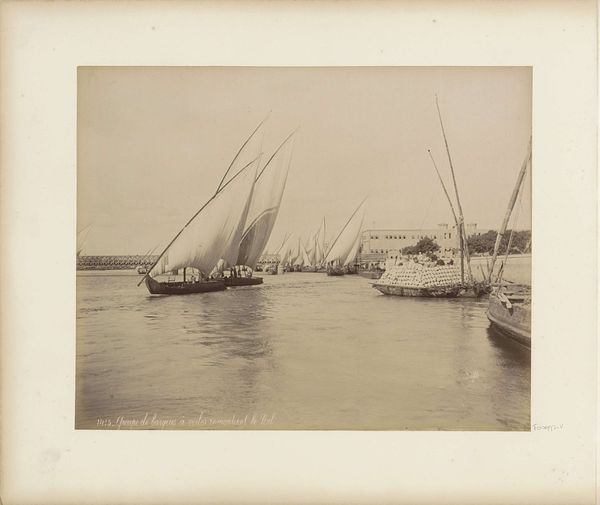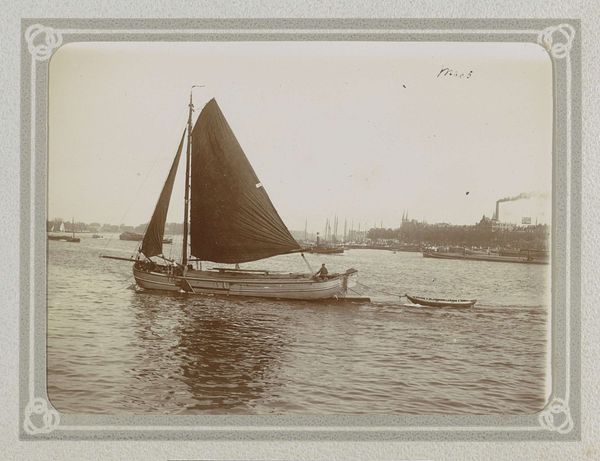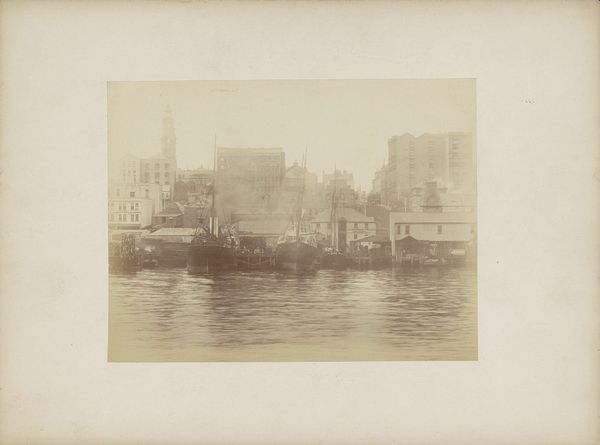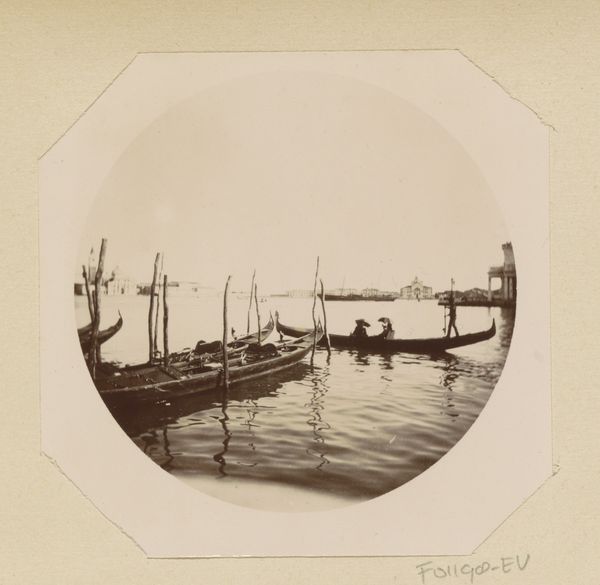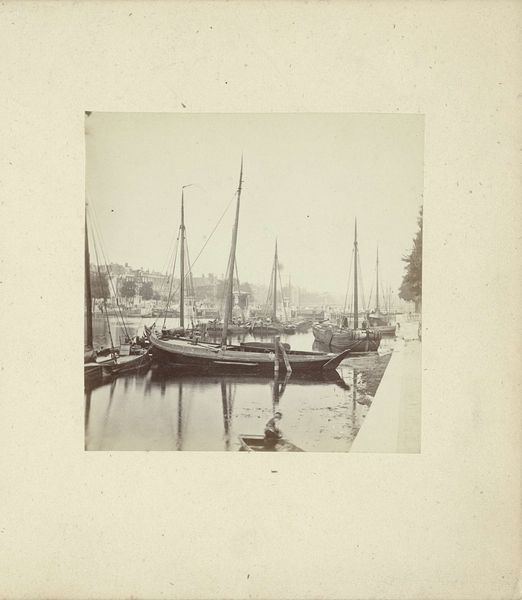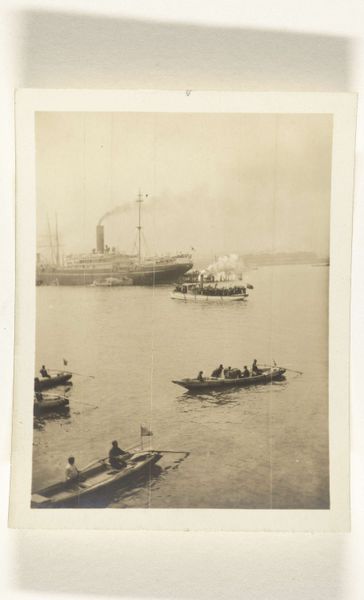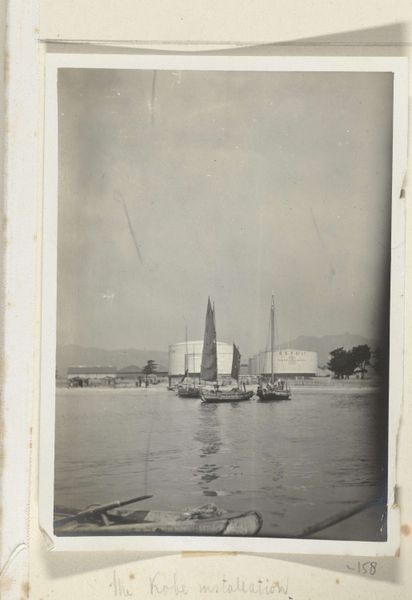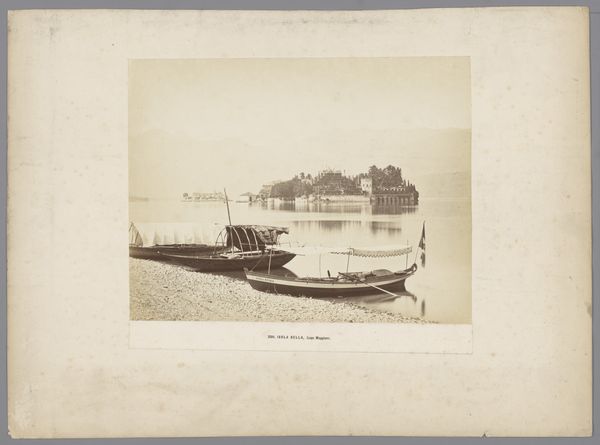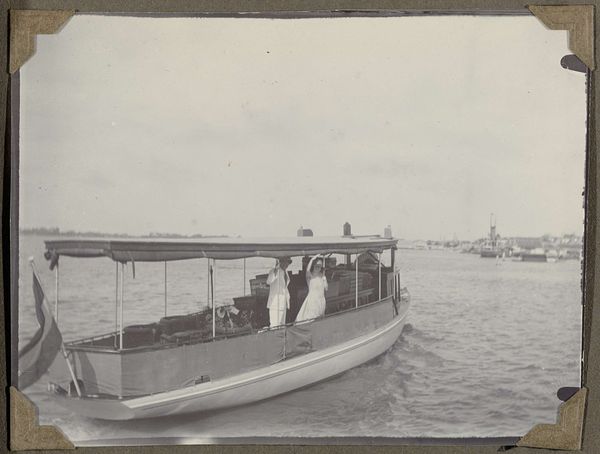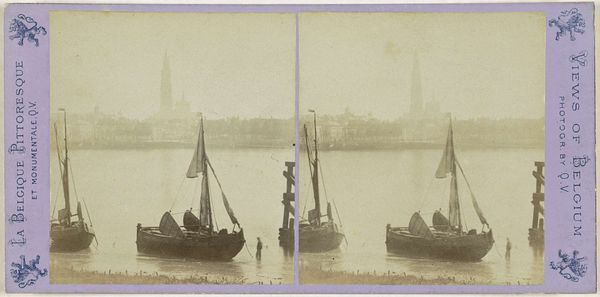
Zes mannen in een roeiboot langs de kust, vermoedelijk bij Sydney c. 1890 - 1910
0:00
0:00
charlesbayliss
Rijksmuseum
photography, gelatin-silver-print
#
portrait
#
pictorialism
#
landscape
#
photography
#
gelatin-silver-print
#
genre-painting
Dimensions: height 241 mm, width 324 mm
Copyright: Rijks Museum: Open Domain
Curator: Here we have Charles Bayliss's "Six Men in a Rowboat Along the Coast, Presumed near Sydney," a gelatin silver print likely taken between 1890 and 1910, now residing here at the Rijksmuseum. Editor: The photograph has this very soft, almost dreamy quality to it. The sepia tones give a nostalgic feel, and there’s something quite serene in the symmetry of the men rowing. It feels… distant. Curator: The hazy effect certainly speaks to the influence of pictorialism. It really aimed to elevate photography to the level of fine art through painterly techniques and manipulation of the image. Look closely and you'll see that, far from documentary photography, Bayliss' photograph sought atmosphere. Editor: It does raise questions about who exactly these men were, and what their relationship to the colonial context of Australia at the time was. Were they part of the upper classes, engaging in leisurely activities while indigenous populations faced displacement? Curator: That’s a crucial lens to examine it through. Photography during this period was often used to reinforce social hierarchies and project a particular image of colonial life back to Europe. The leisurely scene here reinforces an idealized view of colonial life, likely masking the realities of displacement and social injustice. The composition almost entirely centres around this European notion of an enjoyable outing, subtly erasing any evidence of Indigenous presence. Editor: I think interrogating the gaze of the photographer, as well as the context surrounding the subjects in a landscape is exactly how we begin to have that broader conversation of colonialism's imprint in photographic memory. It's also important to ask why museums collect images such as this one. Curator: Precisely. Acknowledging photography's complex past is part of our present mission. The image's technical beauty can't be separated from the historical power dynamics that produced it, allowing viewers to contemplate those realities then and now. Editor: Looking at Bayliss's photo again through this discussion allows a space for more reflective thinking about landscape and the men that inhabit it, or rather dominate it, back then and, in different ways, even today.
Comments
No comments
Be the first to comment and join the conversation on the ultimate creative platform.
